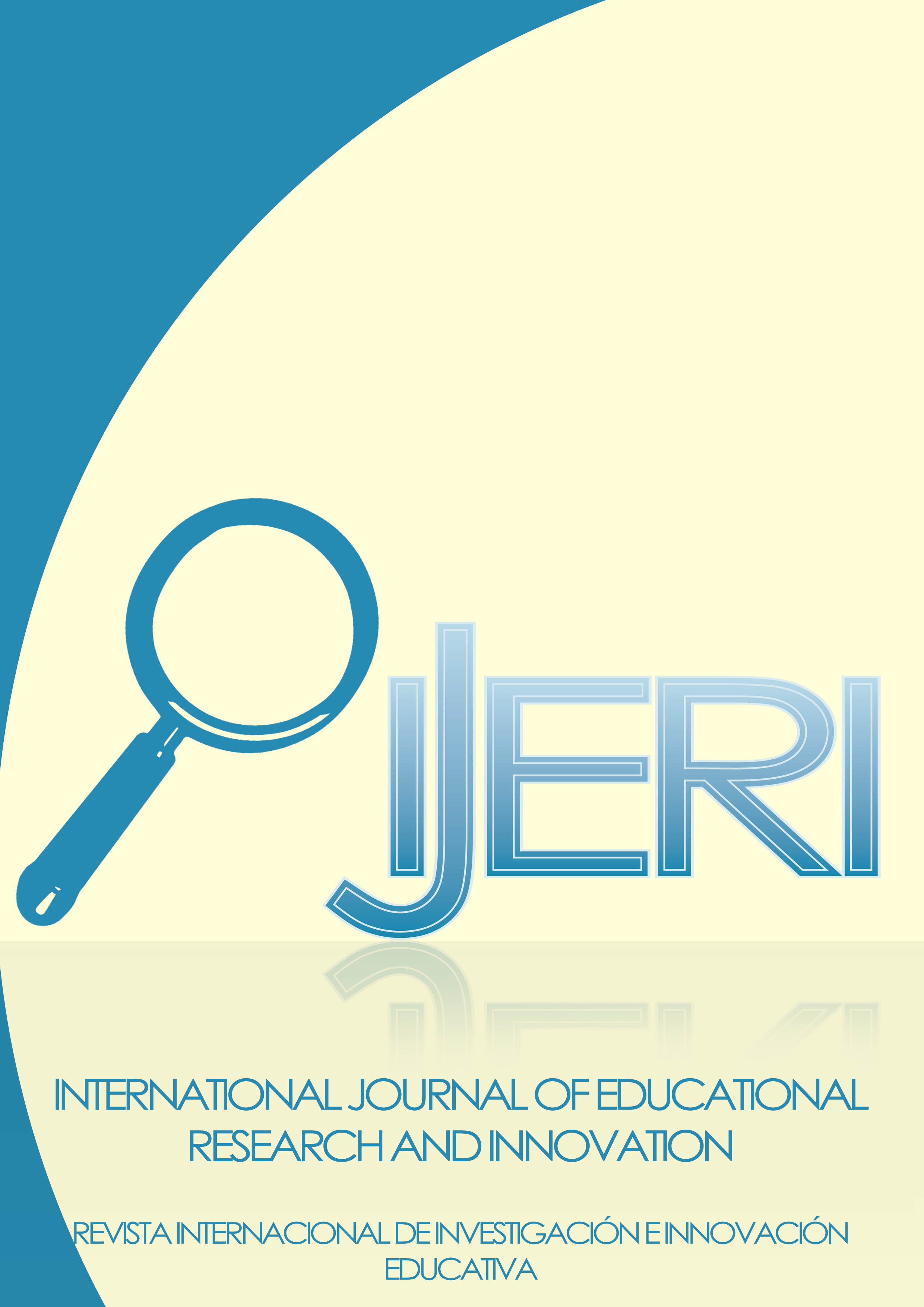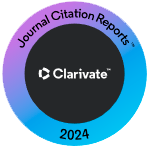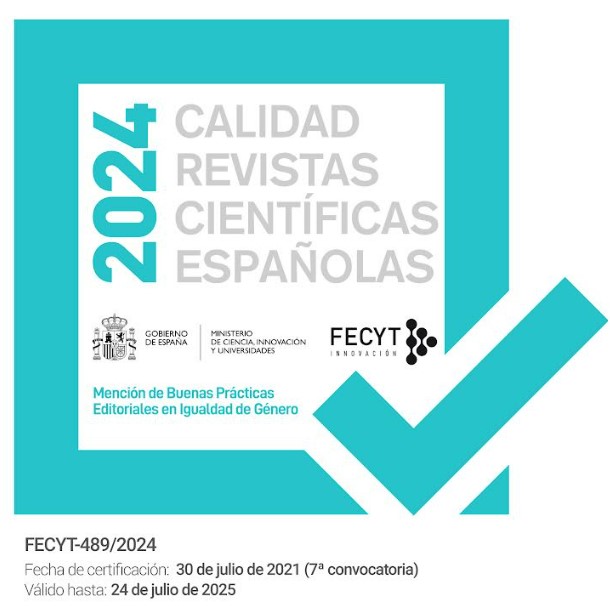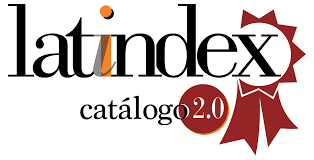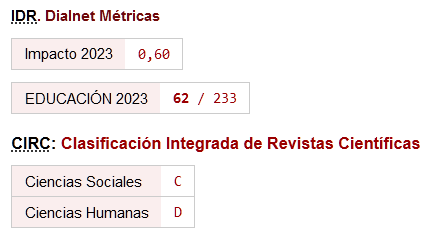Visual Arts Education literacy in university contexts
DOI:
https://doi.org/10.46661/ijeri.5735Keywords:
Artistic education, Literacy, Visual, higher educationAbstract
In a digital world, which is evolving more and more rapidly towards the culture of the visual, acquiring visual literacy tools can be essential, especially for the professional future of university students. Art education manages to enhance the development of visual learning and motivate the student in their process of analysis, discovery, understanding, assessment and apprehension of the visual arts. The use of the image as a teaching tool in the classroom favours the progress of critical and reflective observation and promotes expressive skills. The objective of this work was to present experiences on visual learning in Art Education in university contexts. A systematic review of the literature was carried out during 1990 to 2020. The results allowed us to recognize the main author agents, their research tendencies, and reveal certain gaps in critical knowledge. Research findings and trends converge on the advantages of incorporating visual resources in higher education, emphasizing the importance of sensory approaches to support learning.
Downloads
References
Abad-Segura, E., & González-Zamar, M. D. (2019). Effects of financial education and financial literacy on creative entrepreneurship: A worldwide research. Education Sciences, 9(3), 238. https://doi.org/10.3390/educsci9030238
Abad-Segura, E., González-Zamar, M. D., Infante-Moro, J. C. & Ruipérez García, G. (2020). Sustainable Management of Digital Transformation in Higher Education: Global Research Trends. Sustainability, 12(5), 2107. https://doi.org/10.3390/su12052107
Akçayır, M., & Akçayır, G. (2017). Advantages and challenges associated with augmented reality for education: A systematic review of the literature. Educational Research Review, 20, 1-11. https://doi.org/10.1016/j.edurev.2016.11.002
Arslan, R., & Nalinci, G. Z. (2014). Development of visual literacy levels scale in higher education. Turkish Online Journal of Educational Technology-TOJET, 13(2), 61-70.
Awang, H., & Ramly, I. (2008). Creative thinking skill approach through problem-based learning: Pedagogy and practice in the engineering classroom. International journal of human and social sciences, 3(1), 18-23.
Bleed, R. (2005). Visual literacy in higher education. Educause Learning Initiative, 1(1), 1-11.
Bowler, L. (2014). Creativity through" maker" experiences and design thinking in the education of librarians. Knowledge Quest, 42(5), 58.
Buzan, T. (1996). El libro de los mapas mentales. Madrid: Urano
Cheng, M. Y. V. (2019). Developing individual creativity for environmental sustainability: Using an everyday theme in higher education. Thinking Skills and Creativity, 33, 100567. https://doi.org/10.1016/j.tsc.2019.05.001
Christensen, G. L., & Olson, J. C. (2002). Mapping consumers' mental models with ZMET. Psychology & Marketing, 19(6), 477-501. https://doi.org/10.1002/mar.10021
Dasli, M. (2019). UNESCO guidelines on intercultural education: a deconstructive reading. Pedagogy, Culture & Society, 27(2), 215-232. https://doi.org/10.1080/14681366.2018.1451913
De Backer, F., Lombaerts, K., De Mette, T., Buffel, T., & Elias, W. (2012). Creativity in artistic education: Introducing artists into primary schools. International Journal of Art & Design Education, 31(1), 53-66. https://doi.org/10.1111/j.1476-8070.2012.01715.x
Eisner, E. (2002). The arts and the creation of mind. Yale University Press.
Ervine, M. D. (2016). Visual literacy in instructional design programs. Journal of Visual Literacy, 35(2), 104-113. https://doi.org/10.1080/1051144X.2016.1270630
Eshet, Y. (2004). Digital literacy: A conceptual framework for survival skills in the digital era. Journal of educational multimedia and hypermedia, 13(1), 93-106.
Felten, P. (2008). Visual literacy. Change: The magazine of higher learning, 40(6), 60-64. https://doi.org/10.3200/CHNG.40.6.60-64
Flood, J., & Lapp, D. (1997). Visual literacy: Broadening conceptualizations of literacy: The visual and communicative arts. The Reading Teacher, 51(4), 342-344.
Ghemawat, P. (2017). Strategies for higher education in the digital age. California Management Review, 59(4), 56-78. https://doi.org/10.1177/0008125617717706
González-Zamar, M.-D., & Abad-Segura, E. (2020). Implications of Virtual Reality in Arts Education: Research Analysis in the Context of Higher Education. Education Sciences, 10(9), 225. https://doi.org/10.3390/educsci10090225
González-Zamar, M.-D., & Abad-Segura, E. (2021a). Emotional Creativity in Art Education: An Exploratory Analysis and Research Trends. International Journal of Environmental Research and Public Health, 18(12), 6209. https://doi.org/10.3390/ijerph18126209
González-Zamar, M.-D., & Abad-Segura, E. (2021b). Visual Arts in the University Educational Ecosystem: Analysis of Schools of Knowledge. Education Sciences, 11(4), 184. https://doi.org/10.3390/educsci11040184
González-Zamar, M.-D., & Abad-Segura, E. (2021c). Digital design in artistic education: An overview of research in the university setting. Education Sciences, 11(4), 144. https://doi.org/10.3390/educsci11040144
González-Zamar, M.-D., & Abad-Segura, E. (2020). La Realidad Aumentada como recurso creativo en la educación: Una revisión global. Creatividad y sociedad: revista de la Asociación para la Creatividad, 32, 164-190. https://doi.org/10.37475/creatividadysociedad1/32.8
González-Zamar, M.-D., Abad-Segura, E., Luque de la Rosa, A., & López-Meneses, E. (2020). Digital Education and Artistic-Visual Learning in Flexible University Environments: Research Analysis. Education Sciences, 10(11), 294. https://doi.org/10.3390/educsci10110294
González-Zamar, M.-D., Abad-Segura, E., Padilla, A. H. M., & García, L. M. (2021). Innovación universitaria y creatividad para la mejora sostenible de ecologías emocionales de aprendizaje. Ediciones Octaedro.
Grigorenko, E. L. (2019). Creativity: a challenge for contemporary education. Comparative Education, 55(1), 116-132. https://doi.org/10.1080/03050068.2018.1541665
Gurung, B. & Rutledge, D. (2014). Digital learners and the overlapping of their personal and educational digital engagement. Comput. Educ., 77, 91–100, https://doi.org/10.1016/j.compedu.2014.04.012
Hailey, D. (2014). Visual thinking, art, and university teaching across disciplines. About Campus, 19(4), 9-16. https://doi.org/10.1002/abc.21163
Hetland, L. (2013). Studio thinking 2: The real benefits of visual arts education. Teachers College Press.
Horton, W. (1993). Visual literacy: Going beyond words in technical communications. Technical Communication, 40(3), 495-499.
Jeung, H. J., Chandler, P., & Sweller, J. (1997). The role of visual indicators in dual sensory mode instruction. Educational Psychology, 17(3), 329-345. https://doi.org/10.1080/0144341970170307
Kędra, J., & Zakeviciute, R. (2019). Visual literacy practices in higher education: what, why and how? Journal of Visual Literacy. 38. https://doi.org/10.1080/1051144X.2019.1580438
Knight, L. (2010). Why a child needs a critical eye, and why the art-classroom is central in developing it. International Journal of Art & Design Education, 29, 236–243. https:// https://doi.org/10.1111/j.1476-8070.2010.01655.x
Lee, J. (2018). The effects of knowledge sharing on individual creativity in higher education institutions: socio-technical view. Administrative Sciences, 8(2), 21. https://doi.org/10.3390/admsci8020021
Lewis, S., & Holloway, J. (2019). Datafying the teaching ‘profession’: Remaking the professional teacher in the image of data. Cambridge journal of education, 49(1), 35-51. https://doi.org/10.1080/0305764X.2018.1441373
Lin, H., & Vartanian, O. (2018). A neuroeconomic framework for creative cognition. Perspectives on Psychological Science, 13(6), 655-677. https://doi.org/10.1177/1745691618794945
Mahlow, C. & Hediger, A. (2019). Digital Transformation in Higher Education—Buzzword or Opportunity? ELear, 2019, 13. https://doi.org/10.1145/3329488/3331171
Matusiak, K. K., Heinbach, C., Harper, A., & Bovee, M. (2019). Visual literacy in practice: Use of images in students’ academic work. College & Research Libraries, 80(1), 123. https://doi.org/10.5860/crl.80.1.123
McCormack, A. J. (2017). Developing visual/spatial thinking in science education. Science Education, 143-156. https://doi.org/10.1007/978-94-6300-749-8_11
Moore, D. M. (1994). Visual literacy: A spectrum of visual learning. Educational Technology.
Phillips, P. M. (2019). The Power of Visual Culture and the Fragility of the Text. Ancient Manuscripts in Digital Culture, 3, 30-49. https://doi.org/10.1163/9789004399297_004
Real Academia Española. (2020). Visualizar en Diccionario de la lengua española (23ª ed.). https://dle.rae.es/visualizar
Reiter-Palmon, R., & Robinson, E. J. (2009). Problem identification and construction: What do we know, what is the future? Psychology of Aesthetics, Creativity, and the Arts, 3(1), 43. https://doi.org/10.1037/a0014629
Rieber, L. P. (1995). A historical review of visualization in human cognition. Educational technology research and development, 43(1), 45-56. https://doi.org/10.1007/BF02300481
Scholl, B., & Fitzpatrick, D. (2020). Cortical synaptic architecture supports flexible sensory computations. Current opinion in neurobiology, 64, 41-45. https://doi.org/10.1016/j.conb.2020.01.013
Seels, B. A. (1994). Visual literacy: The definition problem. Visual literacy: A spectrum of visual learning, 97-112.
Sharp, D. L., Bransford, J. D., Goldman, S. R., Risko, V. J., Kinzer, C. K., & Vye, N. J. (1995). Dynamic visual support for story comprehension and mental model building by young, at-risk children. Educational Technology Research and Development, 43(4), 25-42. https://doi.org/10.1007/BF02300489
Shrivastava, L. (1983). Comunicación visual y escuela. Aspectos psicopedagógicos del lenguaje visual. Barcelona: G. Gilli.
Sternberg, R. J. (2003). Creative thinking in the classroom. Scandinavian Journal of Educational Research, 47(3), 325-338. https://doi.org/10.1080/00313830308595
Stopar, K., & Bartol, T. (2019). Digital competences, computer skills and information literacy in secondary education: mapping and visualization of trends and concepts. Scientometrics, 118(2), 479-498. https://doi.org/10.1007/s11192-018-2990-5
Syam, N. & Sharma, A. (2018). Waiting for a sales renaissance in the fourth industrial revolution: Machine learning and artificial intelligence in sales research and practice. Ind. Mark. Manag. 69, 35–146. https://doi.org/10.1016/j.indmarman.2017.12.019
Van Laar, E., van Deursen, A. J., van Dijk, J. A., & de Haan, J. (2020). Determinants of 21st-century skills and 21st-century digital skills for workers: A systematic literature review. Sage Open, 10(1). https://doi.org/10.1177/2158244019900176
Vasilenko, S. A., Goltseva, O. S., Belyakova, T. E., Shevalie, K. N., & Vasilenko, E. V. (2020). Development of Creative Independence of Design Students in Course of Higher Education. Journal of Educational Psychology-Propositos y Representaciones, 8. (SPE2), e637 http://dx.doi.org/10.20511/pyr2020.v8nSPE2.637
Williams, W. R. (2019). Attending to the visual aspects of visual storytelling: using art and design concepts to interpret and compose narratives with images. Journal of Visual Literacy, 38(1-2), 66-82. https://doi.org/10.1080/1051144X.2019.1569832
Winner, E. (2007). Visual thinking in arts education: Homage to Rudolf Arnheim. Psychology of Aesthetics, Creativity, and the Arts, 1(1), 25. https://doi.org/10.1037/1931-3896.1.1.25
Zhu, C. (2015). Organisational culture and technology-enhanced innovation in higher education. Technology, Pedagogy and Education, 24(1), 65-79. https://doi.org/10.1080/1475939X.2013.822414
Published
How to Cite
Issue
Section
License
Copyright (c) 2023 Mariana Daniela González-Zamar, Emilio Abad-Segura, Horacio Ademar Ferreyra

This work is licensed under a Creative Commons Attribution-NonCommercial-NoDerivatives 4.0 International License.

